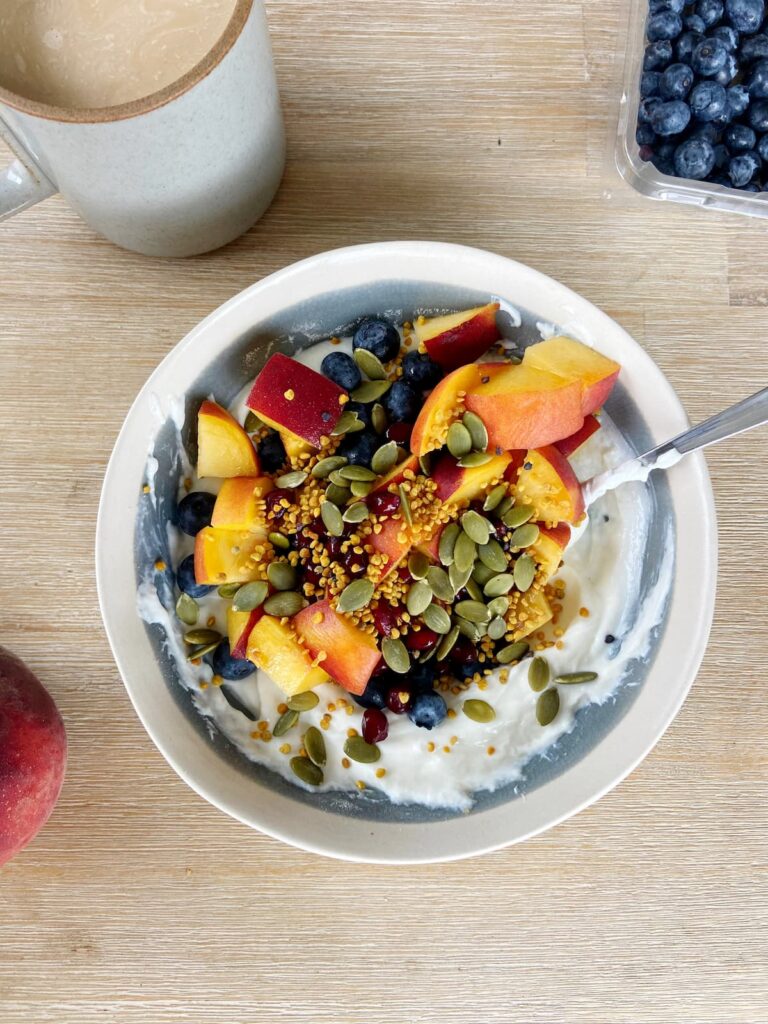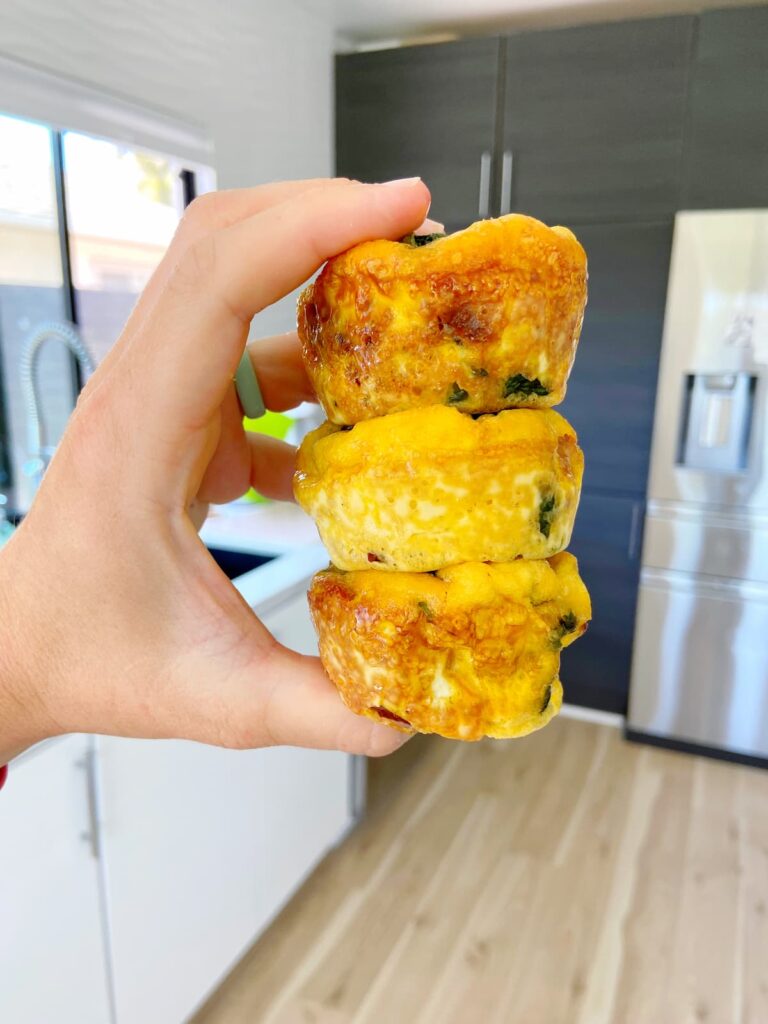These are the best high protein foods to eat everyday for weight loss, including animal, plant-based and vegetarian options.

Eating enough high quality protein throughout the day is a crucial tool for achieving a weight loss goal. Protein helps to reduce hunger, decrease sugar cravings, maintain muscle mass and achieve a body recomposition goal.(1)
But the quality matters.
You might be surprised to hear that the protein listed on the nutrition facts label of your jar of peanut butter is entirely different (and lower quality) than the protein listed on your container of cottage cheese.
And when you’re looking to maximize your weight loss results, you want to focus on high quality sources of protein. Otherwise, you won’t reap the same body recomposition perks (which is where you lose body fat while maintaining muscle mass).
So today, I’m sharing a COMPLETE list of the BEST high quality proteins for weight loss. The proteins on this list are scientifically proven to contain the highest level of essential amino acids and to be the most easily absorbed. Because if you can’t absorb the protein, then you can’t use the protein!
Like I mentioned, this is a very complete list, so scroll down for ALL the protein deets!

What Makes A Protein “High Quality”?
There are two main factors to consider when determining protein quality:
- How digestible it is (this is measured by the DIAAS score)
- How many essential amino acids it contains
The DIAAS score is a measure of protein quality. It’s a newer method of measuring protein quality that has recently replaced the outdated (and less accurate) PDCAAS scoring system. Without getting too much in the scientific weeds, in order to be considered a “high quality” protein, the food must receive a score of 100 or higher. To be considered a “good quality” protein, the food must receive a score of 75-100. Anything that scores below 75 is considered a very low quality protein – and in some circumstances can’t even make the claim of being a protein.
>100 = high quality protein
75-100 = good quality protein
<75 = low quality protein/no protein claim
The other important factor is the essential amino acid makeup. Amino acids are the building blocks of protein. Essential amino acids are those that our body can’t make, so we have to get them from our diet. Proteins that contain all 9 essential amino acids are considered “complete proteins”. Those that contain some, but not all, essential amino acids are considered “incomplete proteins”.
We use these essential amino acids to build various proteins needed within the body. These can be new muscle cells, skin cells, organ tissue, etc. But if we’re missing (or low) in a few of the essential amino acids, then we can’t make as many of the proteins that are body needs for optimal health.
Here’s where things can get a bit tricky…
A food can technically have a lot of total protein – for example, 2 Tbsp. of peanut butter has a whopping 7 grams of total protein. BUT the proteins can lack certain amino acids, making it a poor quality protein – such as peanut butter with a very low DIAAS score of 46. So even though you’re eating protein, you’re not getting the full benefits of protein.
In fact, one study found that women who consumed an omnivorous diet had much higher levels of muscle mass and had better muscle quality than women following a vegetarian diet — while eating the SAME amount of total protein.(2)
Considering higher muscle mass is associated with less insulin resistance (note: higher levels of insulin resistance can make it more difficult to lose weight and increase the risk of type 2 diabetes later in life), this is a hugely important factor.(3)
It’s not to say that you can’t be a vegetarian (or even plant-based, for that matter) and not achieve your goals. It just means you need to be aware of the highest quality sources of protein that fit your dietary preferences.
So when determining the best sources of protein for weight loss and wellness goals, we want to optimize for those that have the highest possible DIAAS score (preferably 100 or higher, but even greater than 75 can work) and that contains the highest number of essential amino acids (preferably all of them).
Scroll down for my complete list of the BEST high protein foods for weight loss that follow these guidelines.
The Top High Protein Foods For Weight Loss
My mission is to make sure that you can achieve your goals regardless of your food preferences. And although hitting daily protein needs from high quality sources is certainly easier with an omnivorous diet, I also know that there are plenty of folks out there who prefer to eat mostly or entirely plant-based. So with that in mind, I’ve broken this list up into animal-based, vegetarian and plant-based proteins to help make your journey that much more simple!
Animal-Based
All animal-based proteins (other than bone broth, collagen and gelatin) will have all essential amino acids and have a DIAAS score of 100 or higher.
- Beef (any cut)
- Chicken (any cut)
- Pork (any cut)
- Fish (any type – salmon, sardines, anchovies, tilapia, etc.)
- Lamb (any cut)
- Venison (any cut)
- Bison (any cut)
- Oyster
- Shrimp
- Lobster
- Crab
Related: My Healthy Pumpkin Sausage “Pasta” Recipe!

Vegetarian
All of the below vegetarian-based proteins will have all essential amino acids and have a DIAAS score of 100 or higher.
- Eggs
- Cow Milk
- Goat milk
- Sheep milk
- Kefir (from any of the above milks)
- Cheese (from any of the above milks)
- Cottage Cheese
- Greek Yogurt
- Skyr
- Halloumi
- Paneer
- Whey Isolate Protein Powder
- Egg White Protein Powder
Related: My High Protein, Low Sugar Blueberry Lemon Pie Smoothie Recipe!
Kickstart Your Journey
Shop Autumn’s Whey Protein Powder
Our delish bestselling zero added sugar, gluten & heavy metal tested whey protein powder!

Plant-Based
The only plant-based protein that contains all essential amino acids and that has a DIAAS score of 100 is potato – go figure! However, the below plant-based proteins all have a DIAAS score of at least 75 and contain most of the essential amino acids.
- Edamame
- Tofu
- Seitan
- Fermented Soy (Tempeh)
- Plant-based yogurts with added protein
- Potato Protein Powder
- Soy Protein Powder
- Pea Protein Powder
- Chickpeas
- Split Yellow Peas – borderline, DIAAS of 73
Related: My Summery Cauliflower Rice Burrito Bowl Recipe!

Combine Plant-Based Proteins
When you combine lower DIAAS/essential amino acid plant-based proteins, you can help to elevate the overall quality. The research on DIAAS scores of protein combinations is limited, so this list will likely expand as more studies have been done. For example, hemp seeds have a very low DIAAS score, but can likely be combined with some other proteins to improve the overall amino acid ratio and DIAAS score. However, more research needs to be performed to verify these claims.
Keep in mind that if you are carb sensitive, all of these combinations will be fairly high in starches and therefore won’t work for your goals. Pssst – curious if you might be carb sensitive? Take my free Carb Sensitivity Quiz HERE.
If you are carb sensitive and 100% plant-based, you will want to focus on the majority of your protein intake coming from the previously stated plant-based protein options. In fact, generally speaking you’ll want to focus on most of your protein coming from the previous plant-based protein options, as these are higher quality regardless. If you are not carb sensitive and looking for additional plant-based protein options, below are the best plant-based combinations to look out for. I’ve also listed the ratios needed of each ingredient in order to achieve the listed DIAAS score.
One last thing to note: many of the foods on this list are commonly heavily sprayed or GMO-ed. So if you do choose these foods, only opt for organic sources.
- Fava Bean/Corn/Soy (10/20/70) – Combined DIAAS 85
- Soy/Oat (90/10) – Combined DIAAS 92
- Oat/Lupin/Soy (10/10/80) – Combined DIAAS 91
- Oat/Lupin (7/93) – Combined DIAAS 76
- Fava Bean/Corn/Potato (15/20/65) – Combined DIAAS 100
- Corn/Potato (25/75) – Combined DIAAS 100
- Corn/Soy (15/85) – Combined DIAAS 88
















